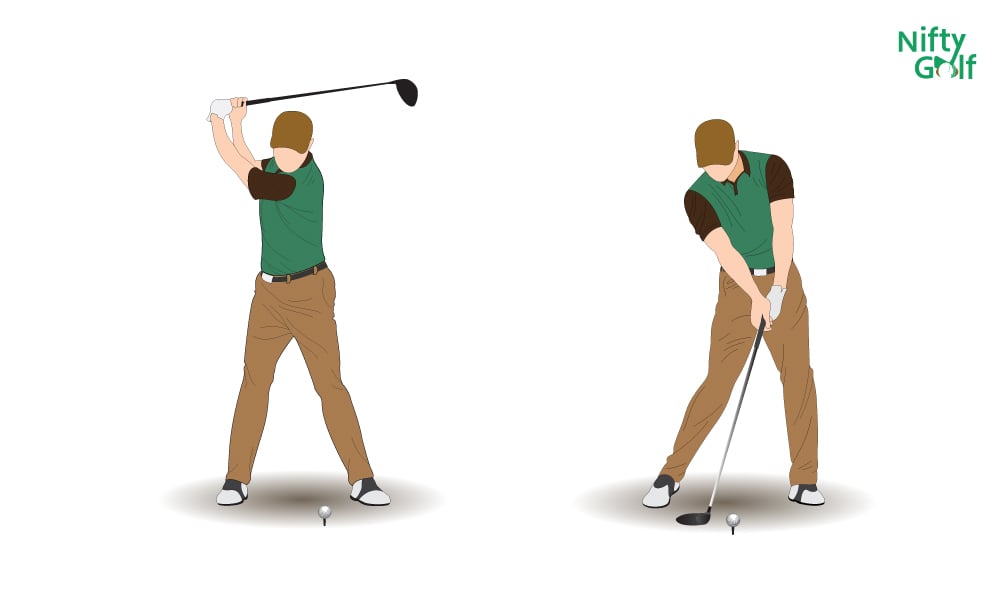To reach your full potential as a golfer, you must take into account all the factors that go into becoming a pro. You need to think about the swing, action, impact, takeout, and much more beyond.
One such critical step in the golf swing is the downswing. It is essential for hitting the target consistently. How hard you swing on the downswing is directly related to how far your golf shot will carry.
And to learn that, you must become familiar with the precise timing and begin the downswing correctly. This article will discuss the steps and tips for starting the downswing in golf to help improve your overall game.
Table of Content
What Is Downswing in Golf?
The downswing in golf is the movement of the club from the top of the backswing to the moment it hits the ball. It’s the second part of the golf swing that follows the backswing, where you bring the club back to get ready to hit the ball.
It begins at the peak of the swing when the transition is complete and it ends when you make contact with the golf ball.
You need to perfect your downswing to hit the ball hard and accurately. It is a complex movement that involves the coordination of the entire body and requires proper timing, sequencing, and mechanics.
Goal of Downswing
When the club is at the top of its backswing, its speed drops to zero. The downswing’s job is to get the club head moving quickly from rest to full speed in time for contact, producing a high launch angle and a solid trajectory for the ball. A significant downswing achieves the following:
- It improves swing speed and keeps club heads from flying off the shaft.
- Positions the point of impact on the middle of the club face
- Impact squares the club’s face.
- Effectually achieves a roughly square trajectory upon impact.
- Adjusts the angle of attack of the club face upon impact
- Manages the club’s angle of attack toward the ball.
How to Start the Downswing tn Golf
A good downswing begins with the correct sequence of motions. If you can perfect this pattern, you’ll create a swing that is all your own.
Step 1: Lift your left heel
The golf swing begins at the ground. Then, the lower body begins its downswing while the upper body and arms are still moving back. One of the essential parts of setting up the downswing is applying pressure to the lead foot at the beginning of the downswing.
Step 2: Knees after hips
The idea here is to consider starting the downswing from the bottom. The bottom is necessary for appropriate sequence and power, and employing it effectively can be quite beneficial.
It’s important to consider how to initiate the downswing with the hips. Although many players believe the knees are the first to return toward the target, the hips do it first.
Step 3: Rotate your hips before your arms
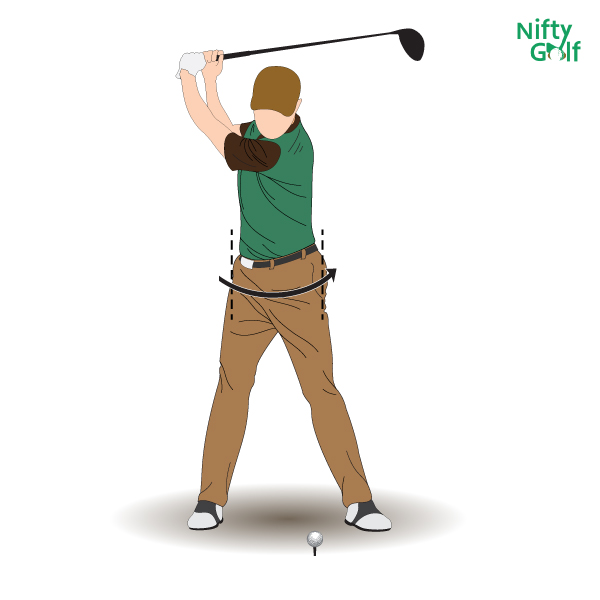
When starting the downswing in golf, it’s important to rotate your hips first before moving your arms, which helps to position your hands and club correctly for the downswing and allows you to generate power with your larger muscles.
It’s essential to resist the temptation to use your arms and hands too early, as this can cause a steep angle in the club shaft, known as the “Death position,” which can cause poor shots.
Instead, let your body lead and drop your hands naturally into position before using your arms and hands to complete the swing. This will help you create a smooth and steady downswing.
Step 4: Tucking your trail elbow
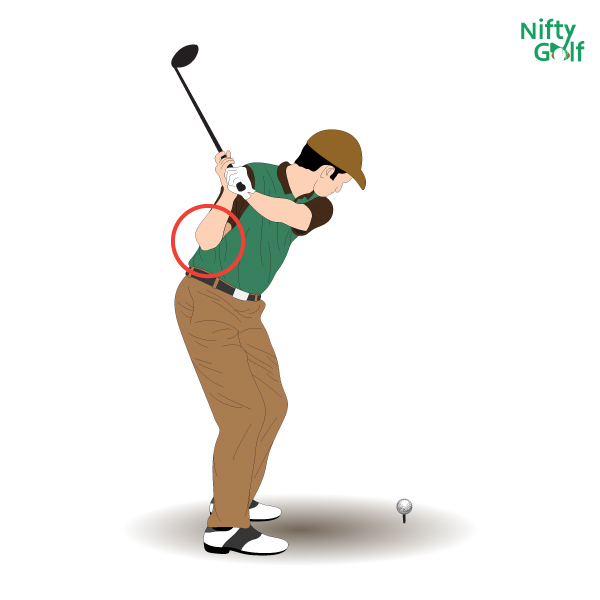
After starting the downswing by rotating your hips, pulling up your trail elbow is essential to ensure proper arm movement during the downswing. This helps to keep the club on an inside track and generate more power by allowing for greater body rotation.
The key is to keep the trail elbow close to and under the lead elbow, as this will help to prevent the “Death position” caused by separating the elbows too wide. In addition, this will help to achieve a smooth and powerful downswing with consistent shots.
Step 5: Keep the lead shoulder down
When having trouble getting the club shallow at the start of the downswing, try to use your shoulders to bring the trailing arm under the lead arm. Because it can cause problems with balance if the lead shoulder rises too quickly, making it challenging to maintain good form.
It’s essential to keep your lead shoulder and chest low and allow the trailing arm to function under the lead arm during the transition. This will help in developing a strong and efficient downswing, leading to more accurate swings.
Step 6: Maintain wrist hinge
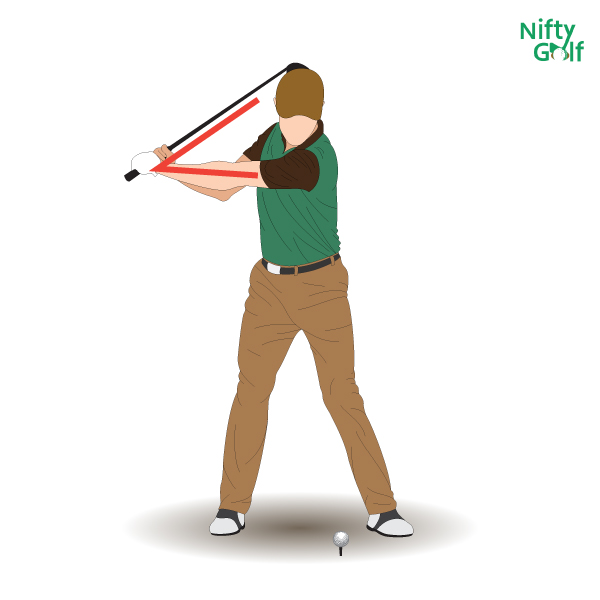
To have a proper golf swing, following the correct movement sequence with your lower body, middle body, and arms are essential, which will help keep the clubhead behind your hands during the swing.
However, sometimes even if you have a well-sequenced swing, it could result in too much delay. You don’t have to force a delay, but your swing sequence may be off if you do.
Step 7: Transfer your weight
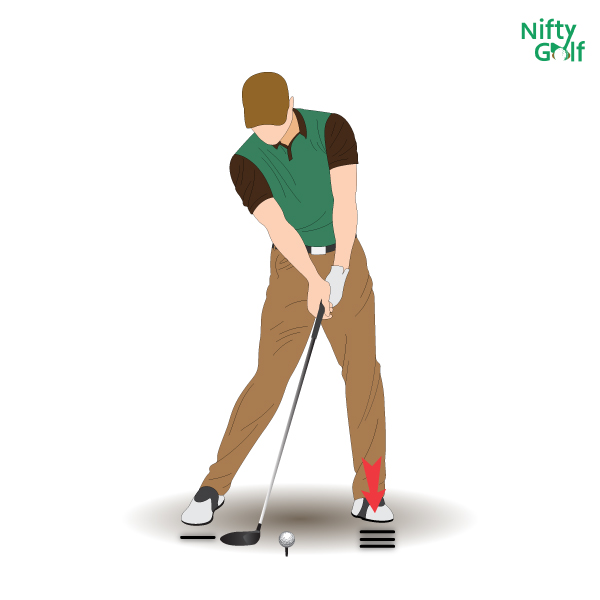
A good weight or pressure transfer is essential for a great golf swing. As the backswing starts, you should feel pressure on your trail foot. Then, as the backswing ends, it’s essential to transfer the weight back onto the lead foot. During the downswing, it will assist in the correct movement of the torso, arms, and hands.
How the Downswing Changes Based on Iron and Driver?
Some amateur golfers believe that using drivers and irons calls for two different swings. In reality, the best golf swing for both the drivers and irons are nearly the same. The angle of attack is the only thing that separates the two of them.
When using an iron, the swing should be made with a downward angle into the ball so that the club’s loft may lift the ball. For best carry and distance off the tee, the driver swing should approach the ball with a slight upward attack angle. There isn’t much difference between the driver and iron swings other than a few changes here and there that will help you hit more fairways and greens.
Downswing with irons
When playing golf with irons, hitting the ball by going down toward it is essential. Golfers often make small holes in the ground with their irons rather than their driver or fairway woods which helps them hit the ball higher and faster.
To properly strike an iron, you should do the following:
- Place your ball slightly forward in the center of your body.
- Adjust your body such that your middle is over the golf ball.
- Make a slight forward motion with your hands to align your lead arm and club.
- Be sure to maintain a solid stance while you swing.
- Be sure to strike the ball with a downward angle.
Method for hitting the long irons
A common misconception among golfers is that the technique for hitting long irons is identical to hitting any other type of iron or wedge. But that is not true.
It takes work to hit a 6 iron, 5 iron, and 4 iron. These golf clubs have the least loft and are the least adjustable. Using a wedge or high-lofted iron, you can easily launch the ball into the air by doing a short, gentle backswing. These golf clubs are built with pinpoint precision in mind. You need to generate greater clubhead speed to hit long irons that get into the air.
There are a few methods to achieve this. Such as:
- The first thing you can do is extend your backswing. If you take more time in the backswing, the club head will go faster through the swing’s arc.
- Second, you can open up your trail leg in your golf stance. Right-handed golfers should move their right foot back and slightly flare to the right. As a result, you’ll be able to spin more efficiently and increase the velocity of your swing.
If you have trouble hitting your 4-iron or 5-iron, the best thing to do is to replace them with a hybrid.
A hybrid is similar to a fairway wood, but it is much more forgiving. Every golfer may achieve maximum height and precision with a hybrid because of the club’s optimal balance of weight and loft.
Downswing with golf drivers
When using your driver, it is most important to strike the ball high. This is because your irons make contact on the downswing while the driver makes contact on the upswing. For low, curved strokes with the driver, try a downward swing. Here is the proper golf swing method for the driver:
- Place your ball inside your front foot.
- Set your body’s center in the middle of your stance.
- Put 60% of your weight on your back foot and tilt your back shoulder down.
- As you swing, lean your body to the side.
- Follow a regular swing and concentrate on making contact on the upswing.
Hitting up on the ball helps control slices and improve drive accuracy by having your body behind and swinging from the inside. This will ensure the bottom of the swing is behind the ball, resulting in an upward swing direction.
Always remember that the club you’re using shouldn’t affect how you swing. You will need to readjust the position and setup of your body. Your body should move forward slightly through impact with your irons, but you should keep your body completely still when using your driver.
4 Drills to Improve Your Downswing in Golf
Now that you know how to start downswing in golf, we’ll look at some drills to improve your downswing. Such as:
Shallow swing drill
You can practice making shallow swings by placing a tee in the ground in front of the ball and aiming to hit the tee rather than the ground behind the ball. This drill helps to promote a shallower angle of attack and a more inside-out swing path.
Pivot drill
Put a rod or club across your shoulders and practice swings turning your body around it without touching the rod. This drill helps to promote a proper weight shift and hip rotation during the downswing.
Slow motion drill
Learn the correct sequence and timing of your downswing by practicing it slowly and carefully. This drill can help you identify any faults in your swing and allow you to make corrections more quickly.
Swing-path drill
Place alignment sticks or clubs on the ground to represent the proper swing path and practice swinging the golf club down the line. This drill helps to promote a proper swing path and a square clubface.
Things to Avoid in Downswing
- Avoid an aggressive arm pull or a movement where you lunge forward with your upper body. It can negatively impact the downswing and make it difficult to hit a good shot. Starting the downswing with your arms can cause the club to move on an incorrect path and lead to poor shots.
- Avoid extending the spine or moving away from the posture you had at the start of the swing. This common mistake can have negative consequences, such as losing control and power in the swing.
- Don’t lose concentration. When you become distracted, you may lose total body attention. If your mind wanders during your swing, you will either misalign your body or need to build up more speed to make solid contact with the ball with your club.
Conclusion
The golf swing combines several moving elements to bring the golfer’s head and the ball closer together. If you want the best downswing results, follow each step.
You may find it easier to carry it through with a thorough understanding of the golf downswing. However, if you want to enhance your overall game, you need to learn the mechanics of it and apply them properly.
We hope that the information given in this article about the golf downswing will be helpful to you as you work to improve your swing and seek solutions to problems you may have had when trying to hit the ball. Hopefully, you’ve learned something from this article.

